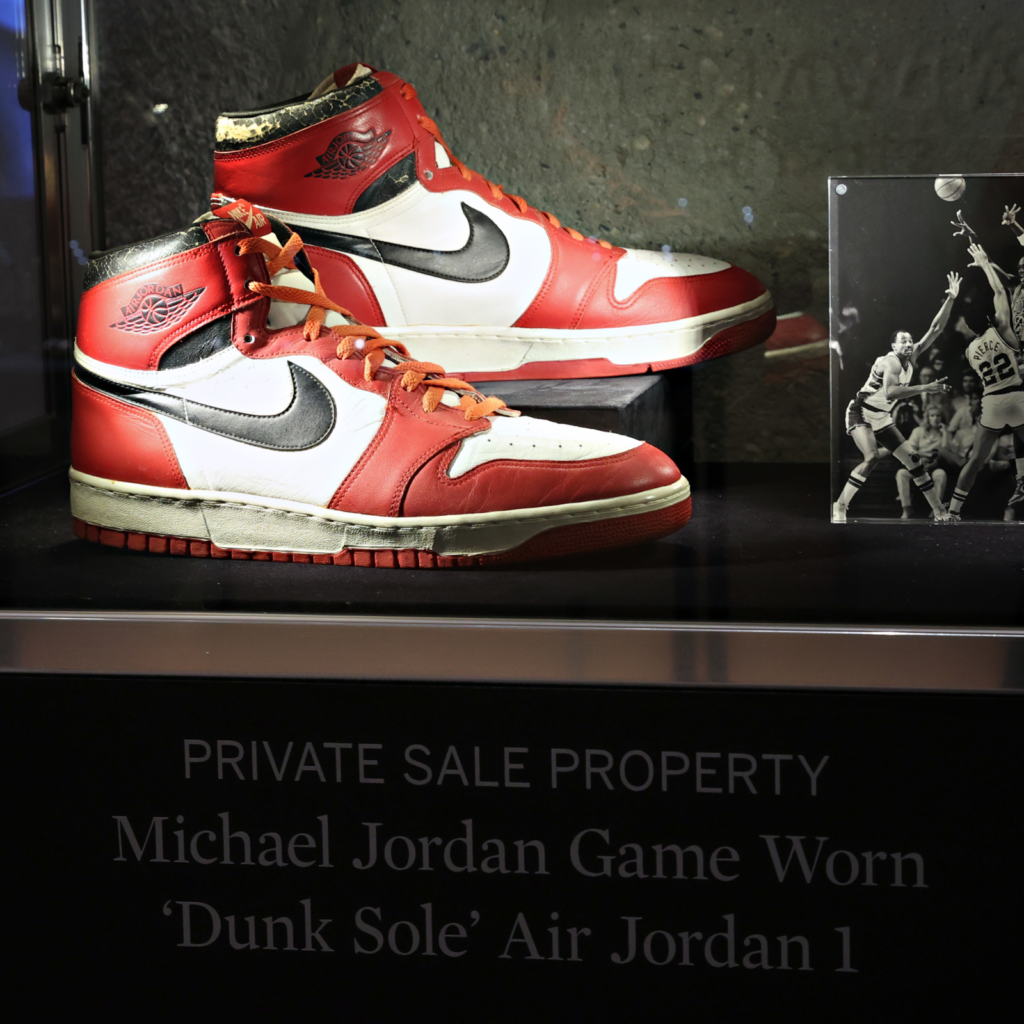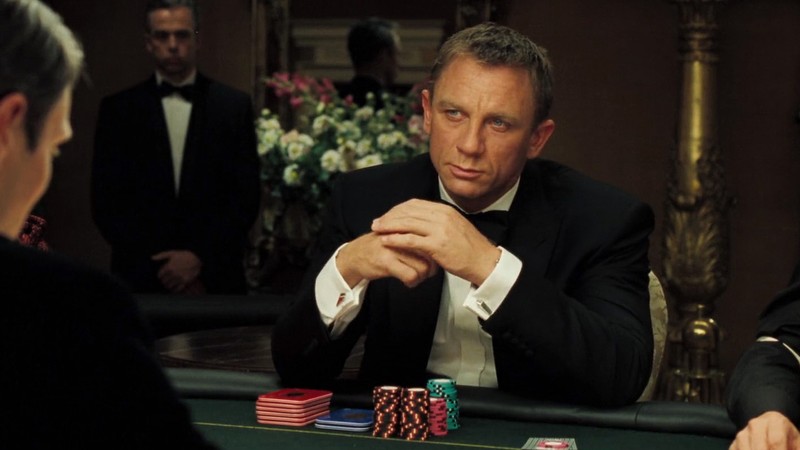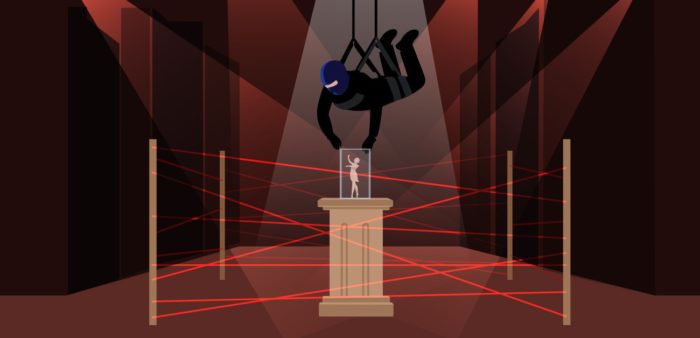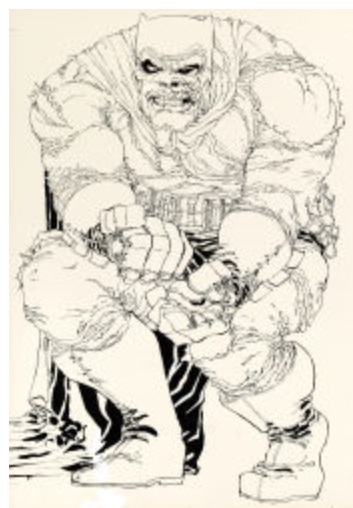CAS ANVAR RELISHES HIS “VULCULAN” ROLE- Silver screen and small screen actor Cas Anvar couldn’t believe he was stepping onto a soundstage in a STAR TREK CONTINUES episode when he first emerged in costume as Sentek in Episode 10 (“To Boldly Go: Part I”).
After playing opposite Ben Affleck in Argo, an Oscar winner for Best Picture, Anvar has stayed busy with Hollywood in film and TV roles in productions like the Princess Diana biopic Diana, the sci-fi adventure Source Code and suspense thriller The Factory. He has also appeared in Steve Spielberg’s The Terminal and then there’s a long list of TV roles on Anvar’s resume, including appearances on NCIS:LA, In Plain Sight, Boston Legal, Castle, and 24.
But to emerge in full Romulan garb on a planet set in rural Georgia? That was one of his personal career highlights – so far.
“On my very first scene, they brought me to the planet set. And it was amazing. I’d never really seen a real STAR TREK set before. You don’t realize how those sets were constructed back then. This thing was so authentic with its fake boulders and sparkly mineral dust and the elevator on the surface of the planet. Then I had my first exposure to holding a disruptor and doing the big fight scene. It was everything you’ve ever imagined when you watch STAR TREK!”
 Anvar is a Canadian born and trained actor whose big break came with his role 2003’s Shattered Glass with Hayden Christiansen, and his professional career began following graduation from Canada’s prestigious National Theatre School. Anvar is also a well-known voice actor, whose talents can be heard in some of the world’s most popular video games (including Call of Duty: BO2, Halo 4, and Assassins Creed: Revelations.)
Anvar is a Canadian born and trained actor whose big break came with his role 2003’s Shattered Glass with Hayden Christiansen, and his professional career began following graduation from Canada’s prestigious National Theatre School. Anvar is also a well-known voice actor, whose talents can be heard in some of the world’s most popular video games (including Call of Duty: BO2, Halo 4, and Assassins Creed: Revelations.)
As a voice actor, he was familiar with STAR TREK CONTINUES executive producer Vic Mignogna. Anvar learned about the opportunity to join the cast as a guest star following a fortuitous meeting with STC director James Kerwin and through a connection with STC make-up artist Lisa Hansell.
“I’d been exposed to STAR TREK CONTINUES before I found out about the opportunity to participate. Their reputation was very high, and the production really is amazingly impressive and very high quality. I like the way STC uses technology to make it possible to produce ‘new’ episodes of The Original Series without losing authenticity,” Anvar said.
Anvar is a fan of all flavors of STAR TREK, noting that “there’s not one that I’ve missed. I’m a Roddenberry fan – a fan of the universe that he created. But each of the STAR TREK series is like a movement in a symphony. Each one has a place and a purpose and its own unique flavor.”
The “Vulculan”
To prepare for the role of Sentek (“I call him a ‘Vulculan,” says Anvar), he thought about what would be required for a cool and collected Vulcan to appear as a hot-headed Romulan.
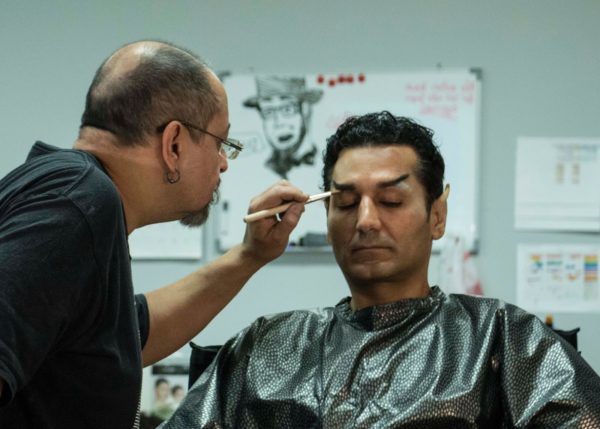
“This is a character who grew up on Vulcan with emotional suppression. And he’s masquerading as a Romulan, who is much more emotional and volatile. So how does this character allow himself to pass as a Romulan? He has to behave in a way that is a little less Vulcan, trying to find the balance. You have a lot of imagery and a wealth of knowledge of Vulcans by watching Leonard Nimoy as Spock. Of course, Sentek was performing in a very non-Vulcan way. That made for an interesting challenge to try to figure out how he could rationalize such impulsive and dangerous behavior. It was fun to figure it out.”
In the Steps of Bill Shatner
“I studied psychology and sciences at McGill, and I think Bill Shatner did as well. He started in theater and did some Shakespeare, and of course everyone knew that he was an alumnus of the school. He went on to perform at Stratford in Toronto.”
That connection to Shakespeare proved very fortuitous.
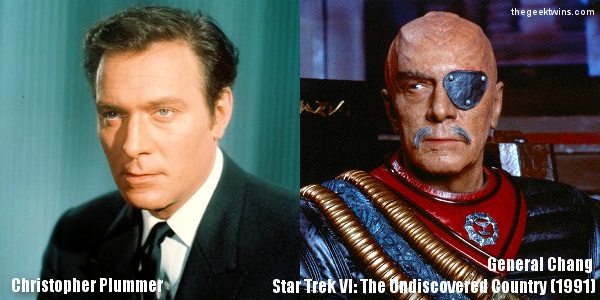
“I actually got Bill Shatner to endorse a fundraising effort for a Shakespeare campaign, along with Christopher Plummer (an honorary McGill graduate.) Both of these famous actors came from my hometown. But after 9/11, our Shakespeare company had a financial problem. These great actors were sympathetic and helped us raise the money we needed. Later, of course, I also worked with Shatner on Boston Legal and saw him as the incredible Denny Crane.”
“Honestly, it was a surreal experience. Ever since I was a kid I wanted to be on STAR TREK and play some sort of an alien – ever since I was a kid. To getting to realize that dream was exciting,” Anvar says.
Supplemental-
Questions & Answers with STC Director James Kerwin
How did you get involved with STC and express your interest in directing an episode — something that led to directing several episodes?
I’d known Vic Mignogna for several years, and cast him in a short film I directed. While we were on set, he mentioned that he was producing a STAR TREK fan series, and asked me to check out “Pilgrim of Eternity.” To be honest, I was wary at first. Although I wasn’t very familiar with fan films, those which I’d happened to catch ranged from great to amateur, from a production perspective. That’s not a “knock” at all — God bless anyone with the gumption to make a fan film. So Vic opened his laptop and said “Just watch.” I did, and I was hooked! The production value was top-notch.
While we were in post-production on the short, Vic mentioned that he was thinking about doing a “Mirror Universe” story for STC episode 3, and asked me if I’d like to come aboard. I was drawn in by his overall goal and philosophy for the show: namely, to produce a Trek webseries made by fans who also happened to be film and TV industry professionals, both behind the camera and in front of it… professionals who agreed to set their busy schedules aside, without fame or financial incentives, to express their love of TOS and share it with the world. So we tossed around a couple plot ideas, but ultimately felt that his initial instinct — to do a fast-paced story that picks up moments after “Mirror, Mirror” and explores Spock’s immediate actions — was the strongest. The rest is history.
That episode still holds a special place in my heart because it was my first — and the Mirror Universe is just so much fun! Wired came to set for that one and shot “behind-the-scenes” footage of the project; I encourage everyone to check that out as well:
I assumed “Fairest of Them All” would be my sole trip on the TOS Enterprise… but a few months later, Vic asked if I’d be interested in coming back to direct episode 4. At that point, I needed to make a decision as to whether I’d be willing to set aside my career for a couple years to focus on STC, because writing and directing episodes isn’t a part-time job. It wasn’t a difficult decision, simply because this entire endeavor was so rewarding!
After “The White Iris,” I settled in as the series’ “story editor” — that’s the person who works creatively with the showrunner (executive producer) to decide on overall storylines and which scripts to produce. I eventually became a co-producer (and later producer) on the show. In addition to directing and/or co-writing most of the episodes, it was necessary for me to work in post as well, helping Vic decide on music and sound cues, etc. I performed what’s called the “online edit” — I took Vic’s cut of each episode and readied it for color grading by our cinematographer Matt Bucy — and then performed the “DI conform” after the graded footage was returned. That involved adding film grain, comping in ungraded opticals (i.e., viewscreen shots), and even adding “judder” to the end titles to simulate the 1969 optical film printing process. I also scheduled shoots, helped Lisa Hansell and Linda Zaruches with some of the social media and publicity, cut together “blooper” reels, and authored the DVDs and Blu-ray discs. But my focus remained primarily on directing. I’m quite proud of what we accomplished, needless to say!
How do you describe the role and activity of a director to someone not familiar with filmmaking. In other words, what does a director do?
The director makes the creative decisions about what’s seen on-screen. He or she works with the actors to craft performances, and composes the shots (i.e., collaborates with the director of photography to determine camera angles, lighting, etc.). The overall “feel” and “pace” of the piece is the responsibility of the director.
Now, there are significant differences between directing for film — which was my primary background before STC — and directing for series television. On a film, the director is usually “top dog,” so to speak. The buck stops with him or her. He or she establishes the overall vision and style of the movie, from the broad strokes to the finest details. That involves making decisions in every department — makeup, costumes, art / set design, sound, camera, lighting, acting, editing, music. A film director is basically the general in charge of a large army. It requires a lot of pre-planning; and that involves everything from casting roles to storyboarding (drawing) shots to making judgment calls on wardrobe. Time is money when you’re on-set or on-location, and — while it’s important to be malleable and be able to think on one’s feet — films ultimately run much more smoothly if the director has pre-visualized everything (either on paper, digitally/virtually using pre-vis software, or even simply in his/her mind). Films involve large crews and complex camera moves, lighting, and shot composition. One typically shoots about 2 or 3 script pages a day on a feature or short — and even that is pushing the limits at times. A theatrical film can have a shooting schedule anywhere from a few weeks to a few months.
Directing for TV is rather different. By the time a director comes onto a series, many of the creative decisions have already been made: primary cast, sets, costumes, and — perhaps most importantly — the overall “style” and “feel” of both the camerawork and the actors’ performances. With few exceptions, most series have multiple directors, and each one can’t bring his/her own personal vision to the table — you’d have a show that looks totally different from one episode to the next! That’s why, in TV, the executive producer is ultimately in charge. Individual directors must conform their styles to the overall vision of the showrunner. In the case of STC, I also had to honor the rich legacy of TOS, and shoot the episodes in a style reminiscent of 1969 network television. So a lot of my 21st-century directorial instincts had to “take a back seat” in order to serve the overall series. On top of that, unlike films, a television episode has a much quicker production schedule. On STC, we usually shot 5 or 6 pages a day — sometimes even 7 or more! That’s definitely a challenge to pull off.
How does the all-volunteer aspect of a fan production like STC make things more difficult — or easier — for a director?
Fortunately, on STC, our so-called “above the line” positions (main cast and guest stars, producers, writers, directors) and our primary department heads had a lot of experience working in film and/or television, and that helped tremendously. I didn’t have to “reinvent the wheel” or show people the ropes.
That cut both ways, though. Since we were dealing with working industry pros, getting everyone together on a volunteer basis was often quite difficult. For example, unlike a “normal” series, we didn’t have the luxury of putting our main cast under series-regular contracts. So if certain actors were working on another film or TV series at any given time, we either couldn’t film during those weeks, or I’d have to shoot “around” their absence. Same thing for our behind-the-scenes crew.
Plus, understandably, we just didn’t have the budget to put our people up in hotels in Georgia — and feed them — for weeks on end. So our production schedule was often pretty tight. The more script pages one must shoot per day, the more stress one is under. There’s no way to avoid that. I suppose that having a background in indie film — where one often must work with lower budgets and tighter schedules — helped me cope!
Ultimately, though, having people who came together out of love for the material was a huge plus. Our team members were all motivated to do their best work, simply because that’s why they were there. And every night after photography, we’d all go out for dinner and drinks together. It really was a family… and one that I already miss.
What are some of the films and television series which influence you as a director?
I think Kubrick is probably my all-time hero. I love the specificity and patience of his films, and how his composition and pacing both inform and reflect his actors’ performances. 2001 is wonderful. I also love both Blade Runner movies, Solaris… but in addition, I have a soft spot for the late-60s aesthetic. The early Bond films, Flint, Barbarella… there’s a fun, sexy style there that we don’t see often any longer. As for television, I thought Ronald D. Moore’s version of Battlestar Galactica was wonderful. And there’s so much great content on right now. Black Mirror, for example. And Mr. Robot just blows me away.
What’s your background, and what are you doing professionally now that STC has finished its final episode?
Growing up, I used to make Doctor Who fan films and amateur movies with our family’s old video camera. If I was assigned to do a term paper, rather than writing a boring old report, I’d shoot it as a narrative film! So it was probably around high school when I first started thinking seriously about a career in directing. I also had — and still have — a passion for cosmology, so I was a bit indecisive. I went to T.C.U. in Dallas / Fort Worth, and started a double-major… but when I realized I’d be in college for many, many years, I ultimately decided to focus on filmmaking (although I did earn a minor degree in astrophysics). My student thesis film wound up winning a first-place Telly Award, so I stayed in Texas for a few years after that, directing shorts, music videos for local bands, etc.
When one of my films started to make a splash on the festival circuit, an assistant agent at talent agency APA offered to rep me, and I moved to Los Angeles. When I first got here, I wound up falling into a lot of stage directing, both classical and modern — which was unusual for me because I had relatively little background in live theatre at the time. But it’s an amazing process, and very different from filmmaking. My work at the Blank Theatre Company in Hollywood — a wonderful venue run by Daniel Henning and Noah Wyle — gave me a lot of “in the field” experience with actors, including many accomplished television and film veterans who’ve retained their passion for live theatre despite their on-screen success.
Ultimately, though, film is my first love, and I was fortunate to get the opportunity to direct a cerebral science fiction noir feature for Entertainment One studios called Yesterday Was a Lie (www.yesterdaywasalie.com), starring Kipleigh Brown as well as Chase Masterson from STAR TREK: Deep Space Nine. After YWAL, we started working on a film based on the science fiction Czech play R.U.R. from 1919. We originally shot a short (www.rurfilm.com) loosely based on the story — that’s where Vic and I first connected re: STC — and we’re developing it into a high-concept feature set in an alt-history, late-60s world. And Kipleigh and I have a couple other things in the works as well. But immediately next for both of us (as well as for Vic and Lisa) is a short psychological character drama called When the Train Stops — also starring Trek actors Michael Forest and John de Lancie. Lisa’s producing, and she did an excellent job successfully crowdfunding the film. We’ll be shooting in 2018, and I’m very much looking forward to it!
Website: www.jameskerwin.com
Twitter: @jameskerwin
Facebook: /jameskerwin
Supplemental-
A Profile with Producer and Make-Up Supervisor Lisa Hansell
How did you get involved with STC, and how did that relationship grow to be more than providing make-up services?
Once upon a time, August of 2012 actually, I was in the process of turning Tim Russ into Tuvok when this guy named Vic Mignogna walked in. We were introduced, exchanged pleasantries and went about our business. At the end of the day, he asked for my business card. The very next day, he called and asked to have lunch to discuss a project he was launching.
Over lunch, he began to explain his vision for STAR TREK CONTINUES. His excitement for STC was palpable, and we established that we both dearly loved STAR TREK and had been lifelong fans. Now, I have been a professional in the entertainment industry for years and had been pitched “passion projects” many times (read: no pay). I had to turn them down because my bills don’t get paid with “great opportunities for exposure,” but this felt different somehow…special. Vic’s passion was contagious!
In The Beginning, there weren’t very many people on board, but all the usual pre-production details needed to be handled. Vic was trying to do it all himself, so I volunteered to take over social media for starters and helped source costumes for our first shoot, which was the final scene for “Pilgrim of Eternity.” There were a million details to take care of, and I offered to help share the load. Over time, this deepened my friendship with Vic and my involvement with STC. I have given input on script and story development (the ending for “Lolani” was my idea, for example), wardrobe choices, sound design, etc. I did whatever needed to be done without regard to whether or not it was “my department” all for love of the project.
What are some of the challenges you faced as Makeup Supervisor on STC?
Of course, the whole series was a period piece with the goal of recreating the look and feel of late 1960’s STAR TREK. They used heavier, more theatrical makeup back in the day, but we were shooting in HD which is much less forgiving than film. Finding a balance of makeup looks that would fit the period and yet not be distractingly obvious was not an easy task!
Several episodes brought their own unique challenges, which I LOVE! In Episode 1 we had to vary the age appearance of Apollo several times throughout the story. Episode 2 was a LOT of green for our Orions, and that green had to be something that wouldn’t transfer onto costumes, props and sets. We custom mixed something called PAX, which is a combination of medical grade adhesive and acrylic color. Consequently, it was very time consuming to apply and remove. Episode 3 was all about recreating every character’s look from “Mirror, Mirror.” In Episode 4, we recreated three known loves from Kirk’s past.
Then there was Episode 8. The ‘Old Kirk’ prosthetic makeup was equal parts long, hard work and a lot of fun! Special effects makeup is my absolute favorite thing because I get to watch the actor use my work to enhance and inform their performance. Episode 9 was a color theory workout! I tested many color combinations for our guests stars before settling on schemes that would read ‘normal’ in black and white and not look completely ridiculous in color. Me to Vic: “I can’t have our guest stars looking like a bowl of hard candies.” For our finale episodes, I got to create an Andorian and…Romulans! So many pointed eartips…glorious! I’m incredibly proud of the work my team and I did throughout the series.
What’s involved in being the Social Media Manager and keeping people informed about STC activities – on Facebook and otherwise?
I could really write a novel here, but I’ll try to summarize. Our main Facebook fan page has grown to nearly 200K “Likes,” and our Facebook Group now has 14.5K members. We have a Twitter following of nearly 22K and 4.5K on Instagram. That’s a lot of eyeballs on our activities! For our main Facebook page, I have an angel volunteer named Linda (I LOVE you, Linda!) who combs through our behind-the-scenes photos and schedules out a ton of posts. I go in daily and check through them, tag people, monitor comments, etc. I check in on the group, and the other platforms several times a day, and have done so every day for the last 5 years.
Social media really is our main liaison with our fans, which is incredibly important. Early on, I wanted to establish a ‘voice’ for STC that included professionalism, class, courtesy, enthusiasm and the principles of IDIC. How STC is perceived is extremely important to me because I believe it reflects on everyone involved – on our family – so I’m very protective of it. I have been so gratified when hearing from fans that we have achieved an excellent public perception.
Vic consults with James Kerwin and myself pretty much daily on STC activities and decisions that he has to make regarding the direction of the production. You could say James and I are the “Bones” and “Spock” to his “Kirk” off-screen. Ha! (We’ve had a group Facebook chat going since episode 4!) Whenever we have an event coming up, we three hash out the plan of execution and release, Take our Christmas gift of downloads for the fans, for example. That has been in the works for months! Then it’s all about choosing the right wording, imagery, etc., and coordinating the exact date and time of release so that it happens as seamlessly as possible.
I’m sure you’ve been touched by the stories that people have told about how STC has affected them. What are a couple of examples that really stand out?
I’m always thrilled to hear stories about STC bringing people together. Parents and children reconnecting to watch new Star Trek episodes like they did years ago, or fans who may no longer have that parent around but can feel their presence each time they watch STC are some of my favorites.
I have to say, though, that the messages and emails I received after “Come Not Between the Dragons” were the most profoundly moving. We had adults who were abused as children write in to say that they were able to heal and let go of the anger they had harbored for years against an abuser who had long since passed. We even had abusers write to us and tell us they finally saw themselves through their children’s frightened eyes and vowed to change – to break the cycle. We never could have imagined having the affect we have had on some of our fans, and I find it profoundly humbling to be a part of something that could invoke that in others.
Is working on STC like working on other fan productions?
There are similarities in that almost any fan production is driven by a passion and love for the source material. I have very much enjoyed working on other things and have made lifelong friendships as a result.
That said, STC is unlike any other production I’ve worked on, fan or otherwise. I’ve been fortunate enough to work on quite a few films that were filled with wonderful professionals who’ve become friends and had a fantastic time doing it, but STC is very different. Everyone is doing it for love and not for money. When you’re pouring your heart into something vs waiting for a paycheck, it shows!
Also, from very early on I have had a much deeper involvement with STC than on most other productions. As a producer, I have input on the final product that I wouldn’t normally have as a makeup artist, and I find that I am much more invested as a result. This has moved me to pursue more of an active role in producing other things as well, because I enjoy being a part of the creative team for the whole project and not just for one department.
When you look back on your experiences with STC, what has been most personally rewarding?
I would have to say that the relationships I’ve built with the cast and crew of STC are #1 for me. We throw the word “family” around a lot, but there just isn’t a better word for it. I deeply and sincerely LOVE each and every one of the crazy nerds on our team, and I know that is for life – there’s no question in my mind. This is my ‘chosen’ family.
A close second would have to be the chance to spend so much time living INSIDE my lifelong love of Star Trek. I’ve walked the corridor of the Enterprise. I’ve sat in the Captain’s chair, stared into Spock’s scanner, dusted the table in Kirk’s quarters, climbed the ladder in engineering and even got to ‘drive the ship’ in a couple of episodes. I’ve napped in sickbay, on the transporter pad, in a turbolift, and in the warp core (yes, really)! I’ve stood at the monitor watching new STAR TREK being created before my very eyes. It doesn’t get any better than that!
What’s your background in the entertainment world, and what’s next on your professional horizon?
I began doing special effects and beauty makeup 11 years ago. I’ve worked on everything from micro budget independent films to multi-million dollar theatrically released features. I’ve worked with names like Ed Begely, Jr., Sean Young, Eric Roberts, Martin Kove…and I absolutely love what I do. The artistry of it combined with storytelling is what I find most compelling.
I’m currently in pre-production on a short film with some STC alumni. The film is called When the Train Stops, and it stars John de Lancie, Michael Forest, Vic Mignogna, Kipleigh Brown, and my dear friend Darren Jacobs. Darren is a Shakespearean Theater-trained actor whose talent always blows me away. I can’t wait for you to see him in action! Of course, our readers already know what brilliance the rest of the cast is capable of. I’m excited to also bring back Emie Morissette, who you will recognize as the relief navigator from STC’s finale episodes.
The film will be directed by our very own James Kerwin, and I’m producing it. It’s a drama with a twist – think Twilight Zone. We will no doubt bring on more STC folks as we get closer to production and start filling out the crew. When you find your “A” team for filmmaking, why look any further! You can check out our website for more info: www.whenthetrainstops.com
In closing, I’d like to thank Vic for bringing me aboard this wonderful journey. His vision gave birth to STC, and my time working on it has truly been one of the most memorable and remarkable experiences of my life. Thank you, Vic, for being a wonderfully insane geek to the extent that you created this beloved masterpiece, and for letting me play on your starship! It was a great ride…
Frequently Asked STC Questions
Weren’t you going to make 13 episodes? Did CBS make you stop?
CBS is not responsible for the decision to end the series. We are doing 11 episodes instead of 13 because another fan group took advantage of the good graces of the copyright holders forcing them to protect their property and the interests of their license holders. In deference and gratitude to CBS, we wrapped up earlier than planned and are very proud of what we’ve accomplished.
What will happen to the studio/sets? Will set visits/tours be available?
We don’t have a definitive answer on this right now, but we’re considering all our options.
So, you can’t make more full-length episodes due to the guidelines, but can you make more vignettes?
Yes, short films are allowed by CBS’s guidelines, but the run time is not the only limitation that would preclude us from continuing. We finished our mission and are grateful to have been able to do so.
How about making some other fan film (Firefly, Battlestar Galactica, Lost in Space, etc?)
STC was born from Vic Mignogna’s love of STAR TREK and not any other franchise. It’s the kind of love required to do this kind of work for 5 years for free. While the other shows are favorites, they aren’t “devote-5-years-of-your-life” favorites!


